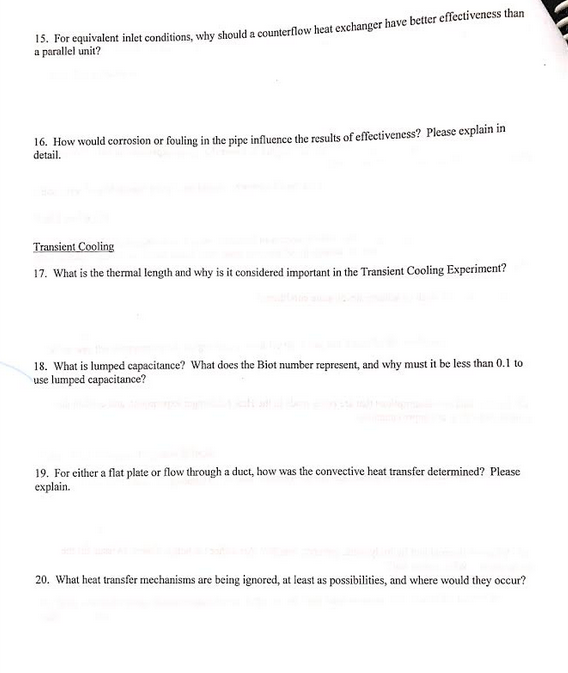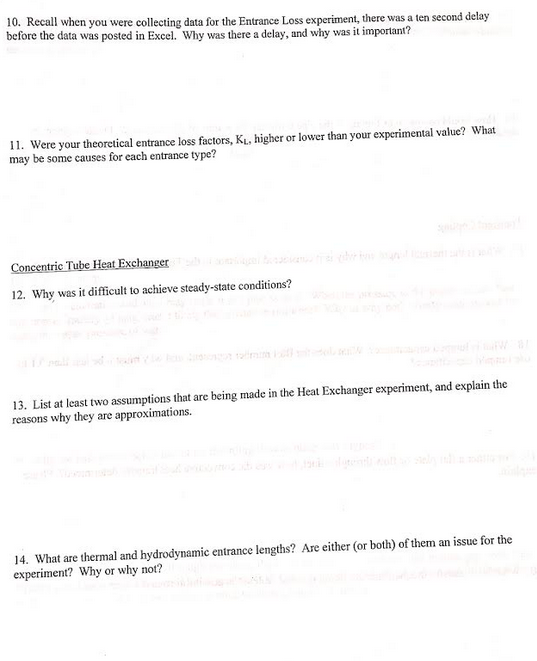15. Por equivalent inlet conditions, why should a counterflow heat exchanger have better effectiveness than a parallel unit?
15. Por equivalent inlet conditions, why should a counterflow heat exchanger have better effectiveness than a parallel unit?
Principles of Heat Transfer (Activate Learning with these NEW titles from Engineering!)
8th Edition
ISBN:9781305387102
Author:Kreith, Frank; Manglik, Raj M.
Publisher:Kreith, Frank; Manglik, Raj M.
Chapter10: Heat Exchangers
Section: Chapter Questions
Problem 10.14P
Related questions
Concept explainers
Heat Exchangers
Heat exchangers are the types of equipment that are primarily employed to transfer the thermal energy from one fluid to another, provided that one of the fluids should be at a higher thermal energy content than the other fluid.
Heat Exchanger
The heat exchanger is a combination of two words ''Heat'' and ''Exchanger''. It is a mechanical device that is used to exchange heat energy between two fluids.
Question

Transcribed Image Text:15. For equivalent inlet conditions, why should a counterlow heat exchanger have better effectiveness than
a parallel unit?
16. How would corrosion or fouling in the pipe influence the results of effectiveness? Please explain in
detail.
Transient Cooling
17. What is the thermal length and why is it considered important in the Transient Cooling Experiment?
18. What is lumped capacitance? What does the Biot number represent, and why must it be less than 0.1 to
use lumped capacitance?
19. For either a flat plate or flow through a duct, how was the convective heat transfer determined? Please
explain.
20. What heat transfer mechanisms are being ignored, at least as possibilities, and where would they occur?

Transcribed Image Text:10. Recall when you were collecting data for the Entrance Loss experiment, there was a ten second delay
before the data was posted in Excel. Why was there a delay, and why was it important?
11. Were your theoretical entrance loss factors, KL, higher or lower than your experimental value? What
may be some causes for each entrance type?
Concentric Tube Heat Exchanger
12. Why was it difficult to achieve steady-state conditions?
13. List at least two assumptions that are being made in the Heat Exchanger experiment, and explain the
reasons why they are approximations.
14. What are thermal and hydrodynamic entrance lengths? Are either (or both) of them an issue for the
experiment? Why or why not?
Expert Solution
This question has been solved!
Explore an expertly crafted, step-by-step solution for a thorough understanding of key concepts.
This is a popular solution!
Trending now
This is a popular solution!
Step by step
Solved in 2 steps

Knowledge Booster
Learn more about
Need a deep-dive on the concept behind this application? Look no further. Learn more about this topic, mechanical-engineering and related others by exploring similar questions and additional content below.Recommended textbooks for you

Principles of Heat Transfer (Activate Learning wi…
Mechanical Engineering
ISBN:
9781305387102
Author:
Kreith, Frank; Manglik, Raj M.
Publisher:
Cengage Learning

Principles of Heat Transfer (Activate Learning wi…
Mechanical Engineering
ISBN:
9781305387102
Author:
Kreith, Frank; Manglik, Raj M.
Publisher:
Cengage Learning